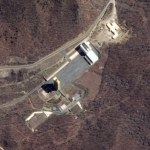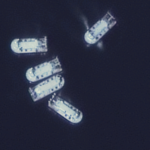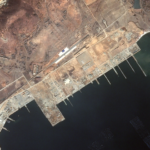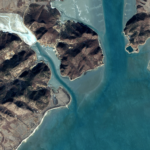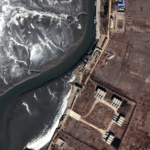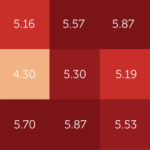April 23, 2018—
On Saturday April 21, commercial satellite imagery from the Sohae Satellite Launching Station indicates minimal to no activity ahead of the inter-Korean summit. While dwindled ground activity could be attributed to the fact that images were taken during a weekend, the absence of any parked vehicular traffic and human activity suggests compliance with the leadership’s declaration, coming out of the Third Plenary of the Central Committee of the Workers' Party.
March 7, 2018, by Victor Cha and Gordon LaForge—
According to Predata analytics, Korean internet users showed relative indifference toward the high level inter-Korean exchanges this week. Instead, they appeared to care more about upcoming talks with the Americans. All sides would be well-served to know that public attention to this issue, despite other newsbreaking events around the peninsula these days, is focused and significant.
March 5, 2018, by Joseph S. Bermudez Jr. and Beyond Parallel—
North Korean special forces are a critical component of the Korean People's Army. Within the Korean People's Army Naval Force, unique sniper brigades exist to carry out specialized missions focused on sabotage and subversion of command and control facilities, reconnaissance, infiltration, and amphibious landings and assaults. As part of a four-part series, this final report provides more details about the development, organization, deployment, and training of North Korean hovercraft units which form part of the KPN sniper brigades.
February 15, 2018, by Joseph S. Bermudez Jr. and Beyond Parallel—
Key among North Korea’s military capabilities are its special operations forces. Embedded within North Korea's special operations forces are two unique navy “sniper” brigades that are subordinate to the Korean People’s Navy. Hovercraft units that operate as part of these brigades have been trained to carry out a more specialized task—amphibious assault landings and infiltration missions.
February 5, 2018, by Joseph S. Bermudez Jr. and Beyond Parallel—
Satellite imagery analysis shows that North Korea continues to develop its conventional military forces in targeted areas. Construction on a new hovercraft base near Yonbong-ni could indicate a significant escalation of the navy sniper brigade threat to the ROK islands in the West Sea and ports along the coast.
January 25, 2018, by Joseph S. Bermudez Jr. and Beyond Parallel—
North Korea has one of the largest special operations forces (SOF) in the world with specially trained, elite soldiers numbering close to 200,000. Among these unique special operations forces today are two navy “sniper” brigades. North Korean hovercraft units—a key element in supporting navy sniper brigades' offensive operations—have evolved and become more threatening over time as a result of restructuring, modernization and construction of new bases closer to the Northern Limit Line.
January 10, 2018, by Sue Mi Terry—
The two Koreas held their first talks this week in over two years. Reflective of the thaw in inter-Korean relations brought about by North Korea’s participation in the 2018 Pyeongchang Olympics, predictive signals by Predata/CSIS Beyond Parallel indicate a decreased likelihood of North Korean WMD activity within the next 14-day window. The predictive signal reached its lowest level since October 28, 2017. The 7-day and 14-day predictive signals also reached their lowest levels on January 9 since November 25, 2017.
December 4, 2017, by Marie DuMond—
South Korea and the United States generally share similar estimations of China’s and Japan’s blind spots in a unification scenario. Both believe that Beijing has the most prominent blind spot on domestic stabilization and refugees, and that Japan shares similar concerns, suggesting that all four powers could prioritize law and order in a unification scenario.
November 22, 2017, by Marie DuMond—
On November 22, predictive signals by Predata/CSIS Beyond Parallel indicate there is an elevated likelihood of a North Korean WMD activity in the next 14 to 30 day windows. The likelihood of WMD activity in the coming weeks is tempered by the fact that, historically, North Korea has not conducted many tests in the November and December timeframe.
November 13, 2017, by Marie DuMond—
Beyond Parallel’s first-ever survey of expert assessments on unification-related issues indicate South Korea and the United States share the common view that domestic stabilization and unification costs constitute the most critical unification blind spots with a high degree of concern but low levels of knowledge for both countries.
